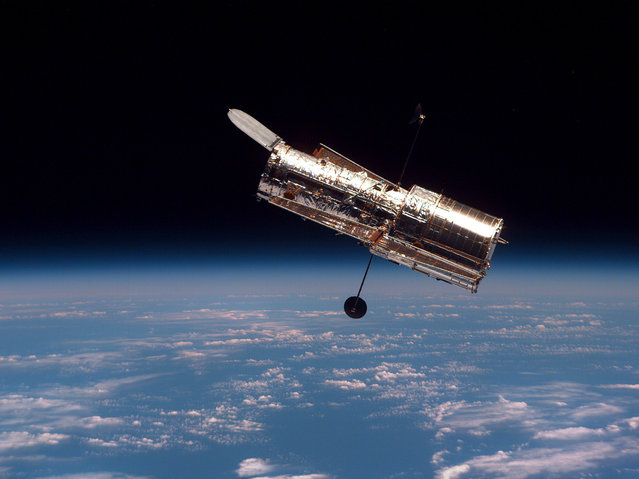
The Hubble Space Telescope is shown following its release from the space shuttle Discovery Wednesday, February 19, 1997. The Hubble Space Telescope, one of NASA'S crowning glories, marks its 25th anniversary on Friday, April 24, 2015. With more than 1 million observations, including those of the farthest and oldest galaxies ever beholden by humanity, no man-made satellite has touched as many minds or hearts as Hubble. (Photo by AP Photo/NASA)
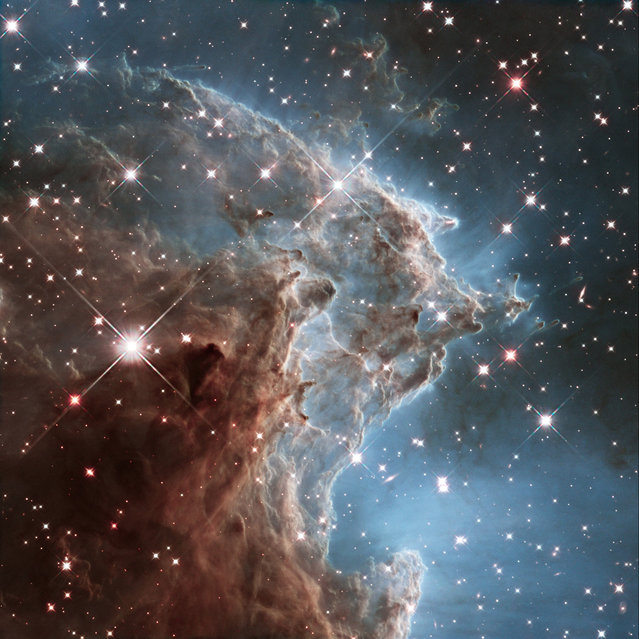
This infrared image made by the NASA/ESA Hubble Space Telescope shows part of NGC 2174, the Monkey Head Nebula. The structure lies about 6400 light-years away in the constellation of Orion (The Hunter). The Hubble Space Telescope marks its 25th anniversary. A full decade in the making, Hubble rocketed into orbit on April 24, 1990, aboard space shuttle Discovery. (Photo by NASA/ESA/Hubble Heritage Team (STScI/AURA) via AP Photo)
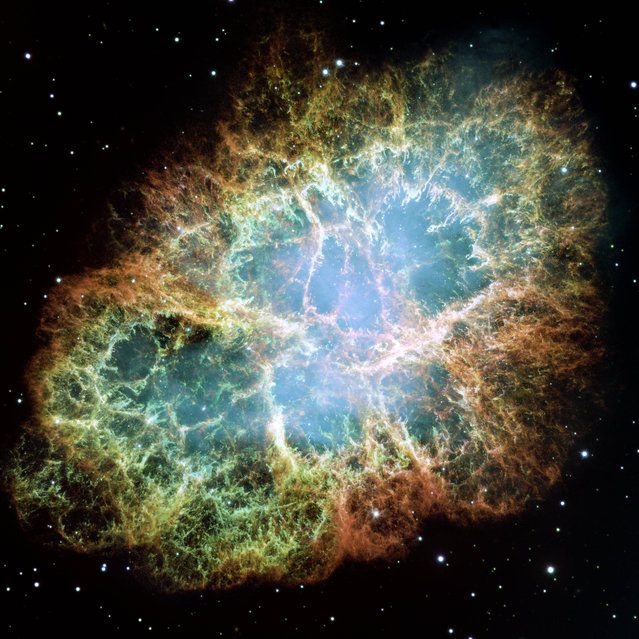
This image made by the NASA/ESA Hubble Space Telescope shows the entire Crab Nebula. (Photo by NASA, ESA, Allison Loll/Jeff Hester - Arizona State University via AP Photo)
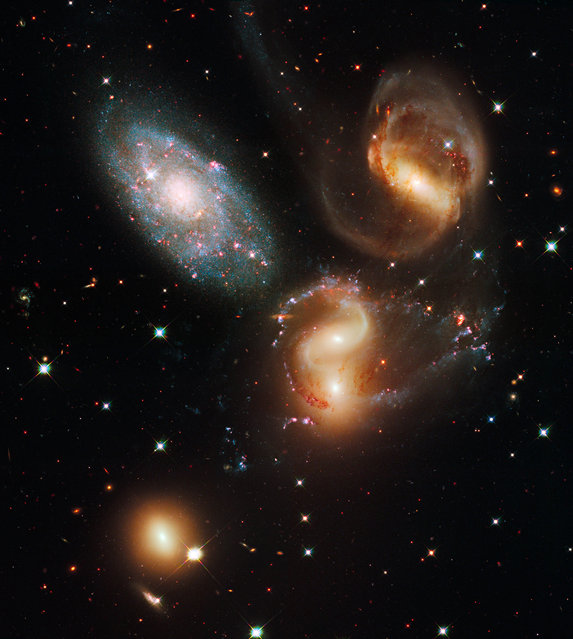
This image made by the NASA/ESA Hubble Space Telescope shows a group of five galaxies known as Stephan's Quintet. Three of the galaxies have distorted shapes, elongated spiral arms, and long, gaseous tidal tails containing myriad star clusters, proof of their close encounters. But studies have shown that group member NGC 7320, at upper left, is actually a foreground galaxy that is about seven times closer to Earth than the rest of the group. (Photo by NASA/ESA/Hubble SM4 ERO Team via AP Photo)
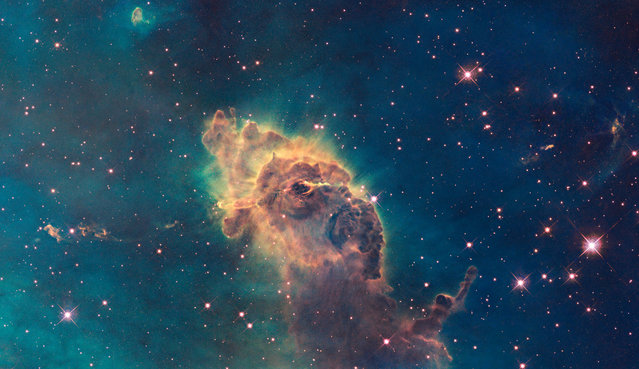
This image made by the NASA/ESA Hubble Space Telescope shows the tip of the three-light-year-long pillar in a stellar nursery called the Carina Nebula, located 7500 light-years away from the Earth. Composed of gas and dust, the structure is illuminated by light from hot, massive stars off the top of the image. (Photo by NASA/ESA/Hubble SM4 ERO Team via AP Photo)
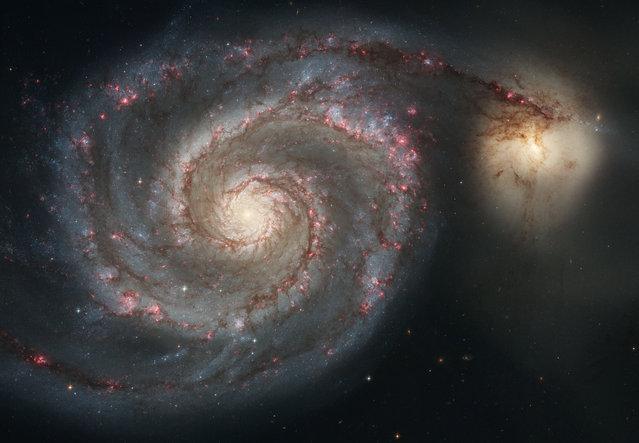
This January 2005 image made by the NASA/ESA Hubble Space Telescope shows the Whirlpool Galaxy (M51) and a companion galaxy. The Whirlpool's two curving arms are star-formation factories, compressing hydrogen gas and creating clusters of new stars. (Photo by NASA, ESA, S. Beckwith (STScI), Hubble Heritage Team STS via AP Photo)
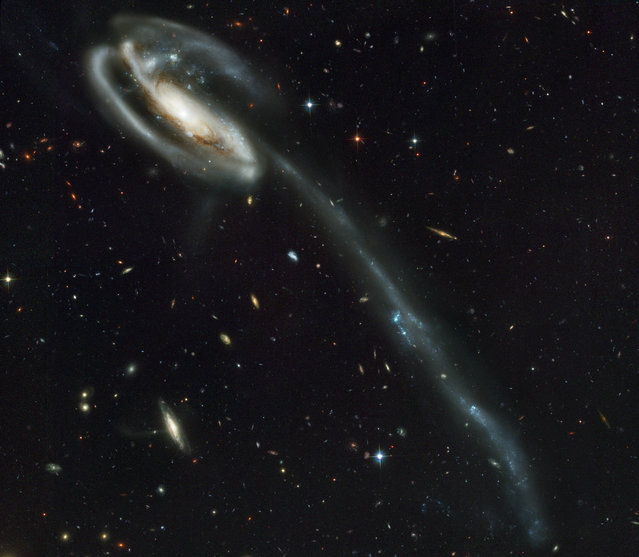
This image made by the NASA/ESA Hubble Space Telescope shows galaxy UGC 10214 with the long streamer of stars. Its distorted shape was caused by another galaxy passing nearby. (Photo by NASA, Holland Ford (JHU), ACS Science Team, ESA via AP Photo)
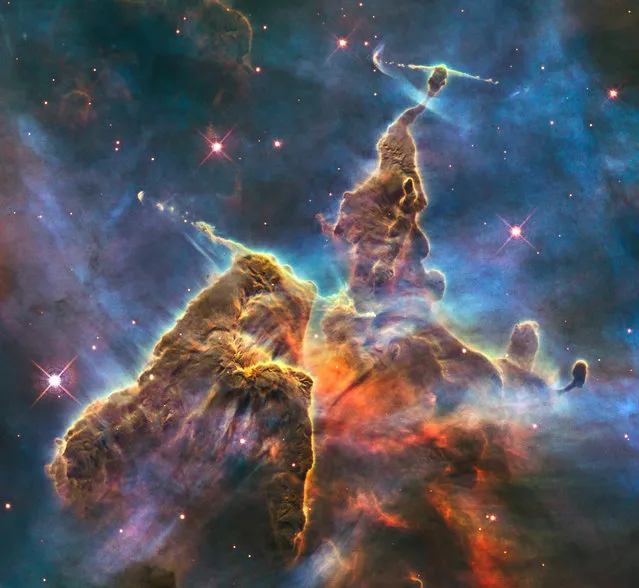
This February 2010 image made by the NASA/ESA Hubble Space Telescope shows a three-light-year-tall pillar of gas and dust in the Carina Nebula which is being eaten away by the light from nearby bright stars. Inside, infant stars fire off jets of gas that can be seen streaming from towering peaks. The stellar nursery is located 7500 light-years away in the southern constellation of Carina. The colors in this composite image correspond to the glow of oxygen (blue), hydrogen and nitrogen (green), and sulphur (red). (Photo by NASA/ESA, M. Livio, Hubble 20th Anniversary Team (STScI) via AP Photo)
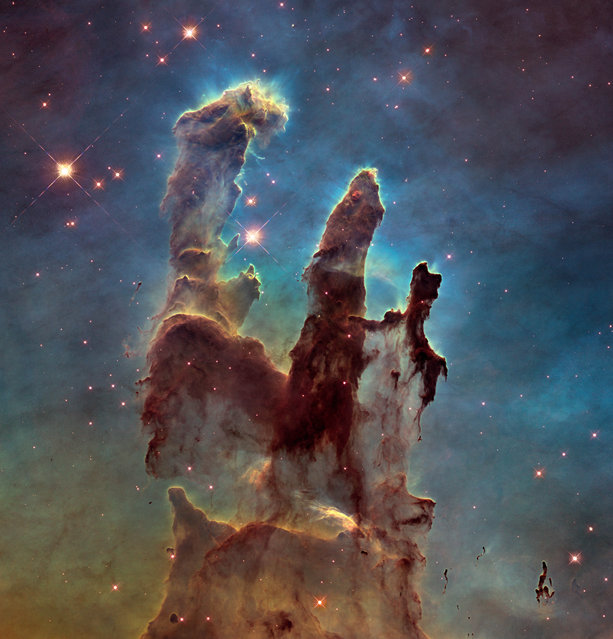
This image made by the NASA/ESA Hubble Space Telescope shows the Eagle Nebula's “Pillars of Creation”. The dust and gas in the pillars is seared by the intense radiation from young stars and eroded by strong winds from massive nearby stars. (Photo by NASA, ESA/Hubble, Hubble Heritage Team via AP Photo)
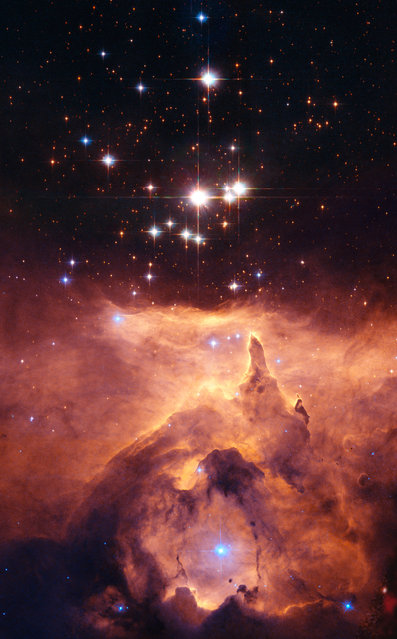
This image made by the NASA/ESA Hubble Space Telescope shows the star cluster Pismis 24 in the core of the large emission nebula NGC 6357. Part of the nebula is ionised by the youngest (bluest) heavy stars emitting intense ultraviolet radiation, heating the gas surrounding the cluster and creating a bubble in NGC 6357. (Photo by NASA/ ESA, Jesus Maiz Apellaniz – Instituto de Astrofisica de Andalucía, Spain via AP Photo)
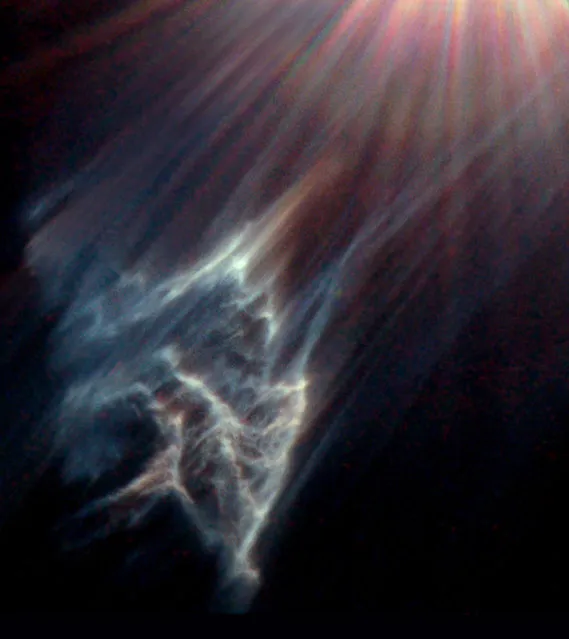
This image made by the NASA/ESA Hubble Space Telescope shows the tendrils of a dark interstellar cloud being destroyed by the passage of one of the brightest stars in the Pleiades star cluster. (Photo by NASA/ESA, Hubble Heritage Team STScI/AURA, George Herbig via AP Photo)
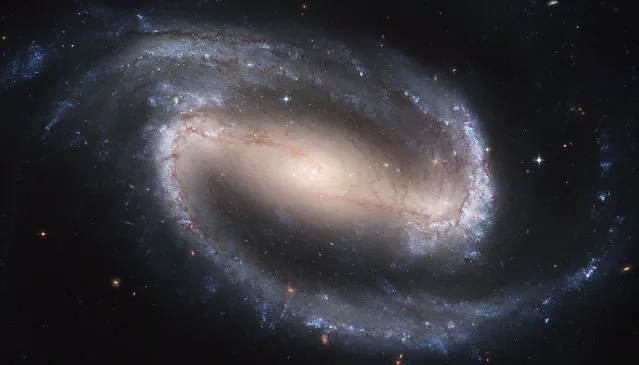
This image made by the NASA/ESA Hubble Space Telescope shows the barred spiral galaxy NGC 1300. It is considered to be prototypical of barred spiral galaxies. (Photo by NASA/ESA, Hubble Heritage Team STScI/AURA via AP Photo)
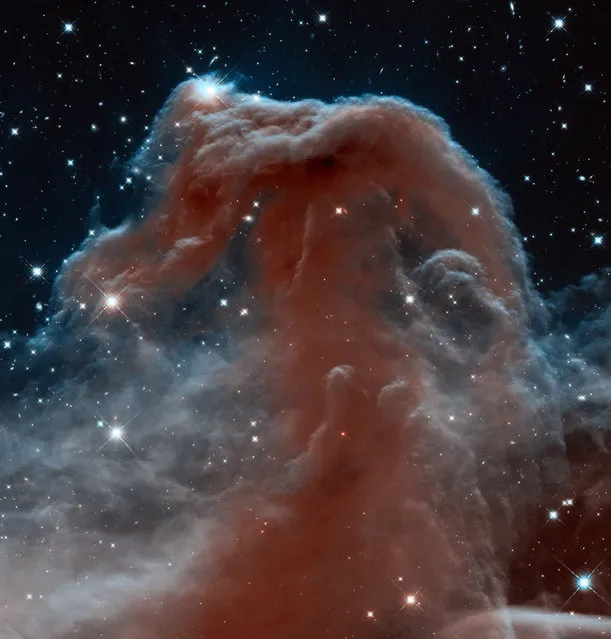
This image made by the NASA/ESA Hubble Space Telescope shows Barnard 33, the Horsehead Nebula, in the constellation of Orion (The Hunter). This image shows the region in infrared light, which has longer wavelengths than visible light and can pierce through the dusty material that usually obscures the nebula's inner regions in visible light. (Photo by NASA/ESA/ Hubble Heritage Team (AURA/STScI) via AP Photo)
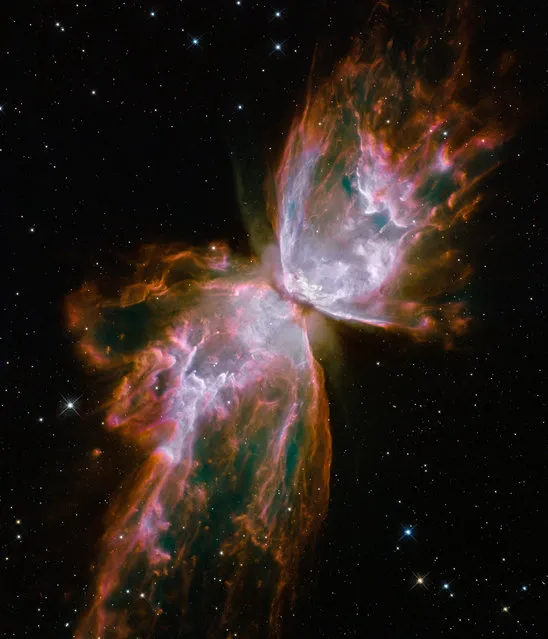
This image made by the NASA/ESA Hubble Space Telescope shows jets of gas heated to nearly 20,000 degrees Celsius traveling at more than 950,000 kilometres (59,000 miles) per hour streaming from they dying star NGC 6302, the “Butterfly Nebula” in the Milky Way galaxy. The star was once about five times the mass of the Sun. (Photo by NASA/ESA/Hubble SM4 ERO Team via AP Photo)
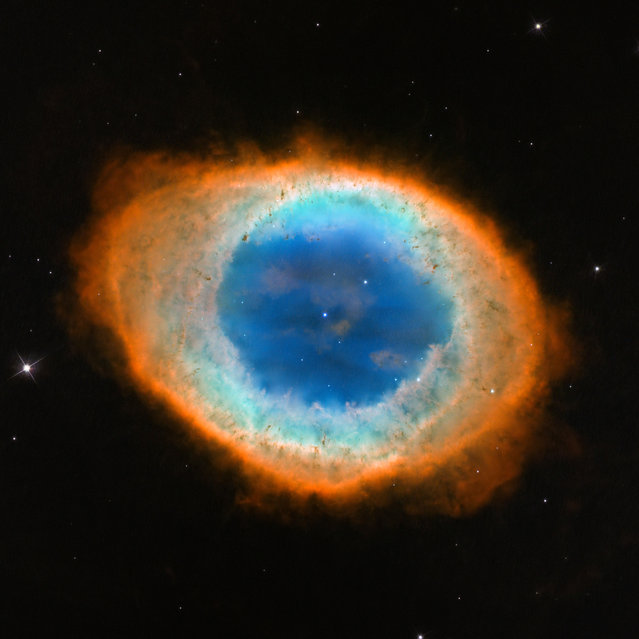
This image made by the NASA/ESA Hubble Space Telescope shows Messier 57, the Ring Nebula. (Photo by NASA/ESA, C. Robert O'Dell (Vanderbilt University) via AP Photo)
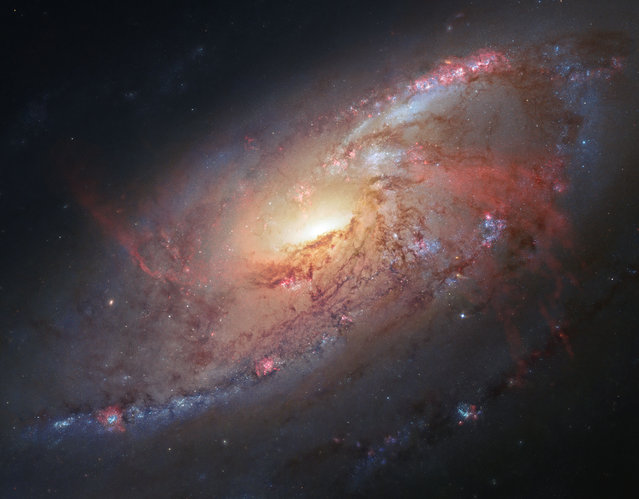
This image made by the NASA/ESA Hubble Space Telescope shows M106 with additional information captured by amateur astronomers Robert Gendler and Jay GaBany. Gendler combined Hubble data with his own observations to produce this color image. It is a relatively nearby spiral galaxy, a little over 20 million light-years away. (Photo by NASA/ ESA/ Hubble Heritage Team (STScI/AURA), R. Gendler via AP Photo)
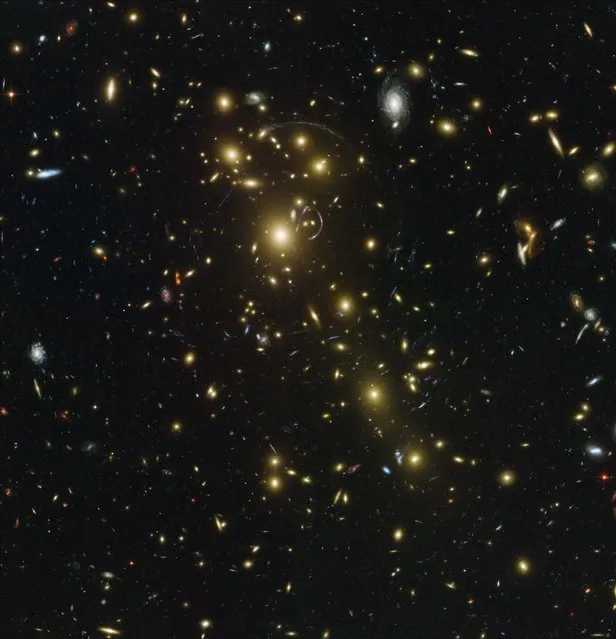
This image made by the NASA/ESA Hubble Space Telescope shows Abell 1703 which is composed of over one hundred different galaxies whose collective mass acts as a gravitational lens. The massive galaxy cluster in the foreground (yellow mostly elliptical galaxies scattered across the image) bends the light rays of galaxies behind it in a way that can stretch their images into multiple arcs. Abell 1703 is located at 3 billion light-years from the Earth. (Photo by NASA/ESA, and Johan Richard (Caltech, USA) via AP Photo)
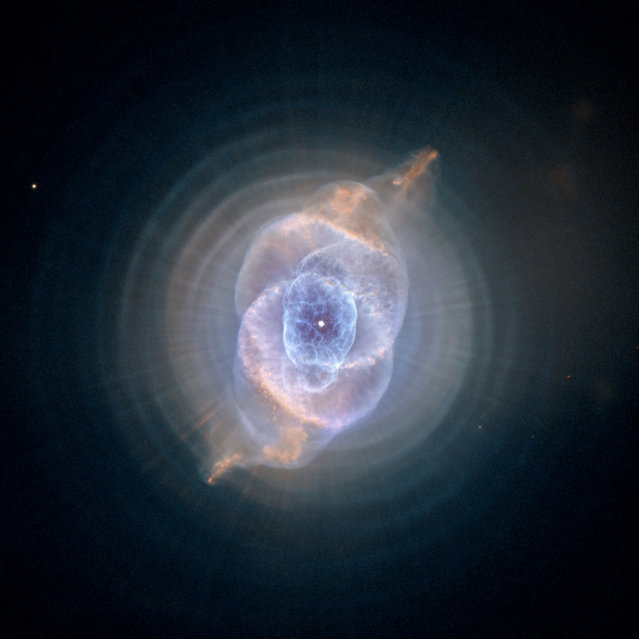
This image made by the NASA/ESA Hubble Space Telescope shows NGC 6543, the Cat's Eye Nebula. A planetary nebula forms when Sun-like stars gently eject their outer gaseous layers that form bright nebulae. In 1994, Hubble first revealed the nebula's surprisingly intricate structures, including concentric gas shells, jets of high-speed gas, and unusual shock-induced knots of gas. (Photo by NASA, ESA, HEIC, Hubble Heritage Team (STScI/AURA) via AP Photo)
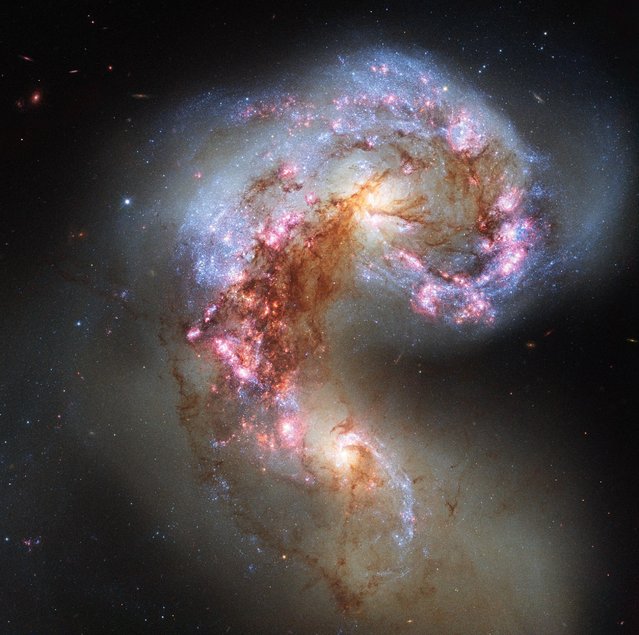
This image made by the NASA/ESA Hubble Space Telescope shows NGC 4038 and NGC 4039, known as the Antennae Galaxies. Once normal, sedate spiral galaxies like the Milky Way, the two have spent the past few hundred million years intertwining with one another. Far-flung stars and streamers of gas stretch out into space, creating long tidal tails reminiscent of antennae. They are expected to eventually form one large elliptical galaxy. (Photo by ESA/Hubble, NASA via AP Photo)
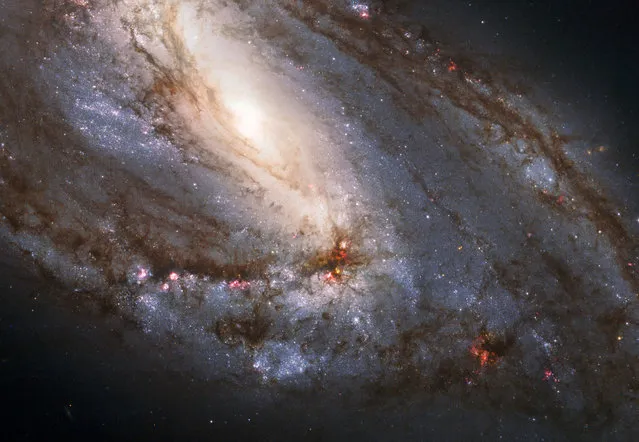
This image made by the NASA/ESA Hubble Space Telescope shows M66, the largest of the Leo Triplet galaxies. It has asymmetric spiral arms and an apparently displaced core most likely caused by the gravitational pull of the other two members of the trio. (Photo by NASA, ESA, Hubble Heritage (STScI/AURA)-ESA/Hubble Collaboration via AP Photo)
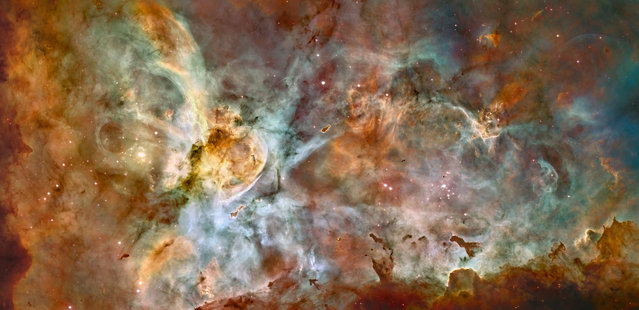
This false-color image made by the NASA/ESA Hubble Space Telescope shows the Carina Nebula. Outflowing winds and intense ultraviolet radiation from the large stars shape the material that is the last vestige of the giant cloud from which the stars were born. Red corresponds to sulfur, green to hydrogen, and blue to oxygen emission. (Photo by NASA/ESA, N. Smith – University of California, Berkeley/Hubble Heritage Team (STScI/AURA) via AP Photo)
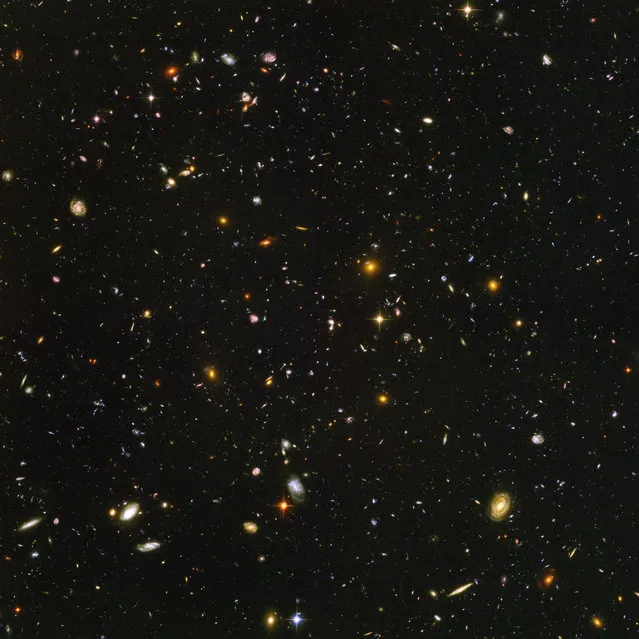
This image made by the NASA/ESA Hubble Space Telescope shows nearly 10,000 galaxies in the deepest visible-light image of the cosmos, cutting across billions of light-years. (Photo by NASA, ESA, S. Beckwith (STScI), HUDF Team via AP Photo)
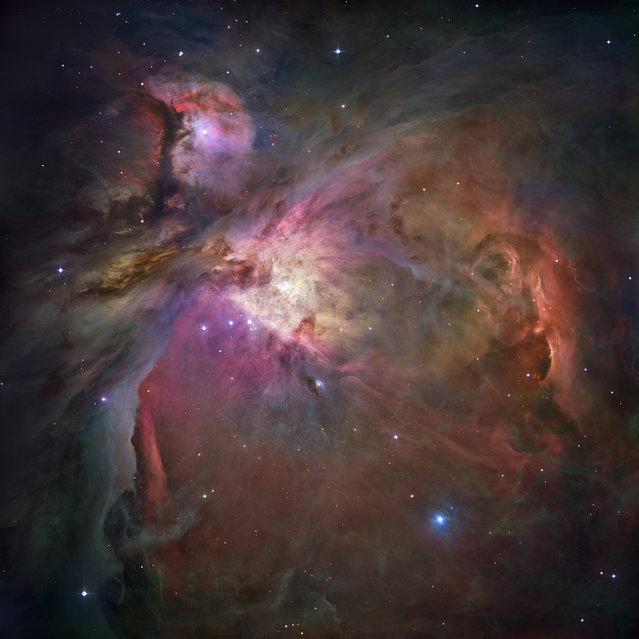
This image made by the NASA/ESA Hubble Space Telescope shows the Orion Nebula and the proceess of star formation, from the massive, young stars that are shaping the nebula to the pillars of dense gas that may be the homes of budding stars. (Photo by NASA, ESA, M. Robberto – Space Telescope Science Institute/ESA via AP Photo)

This image made by the NASA/ESA Hubble Space Telescope shows a tower of cold gas and dust rising from a stellar nursery called the Eagle Nebula. The soaring tower is 9.5 light-years high, about twice the distance from our Sun to the next nearest star. (Photo by NASA, ESA, Hubble Heritage Team STScI/AURA via AP Photo)
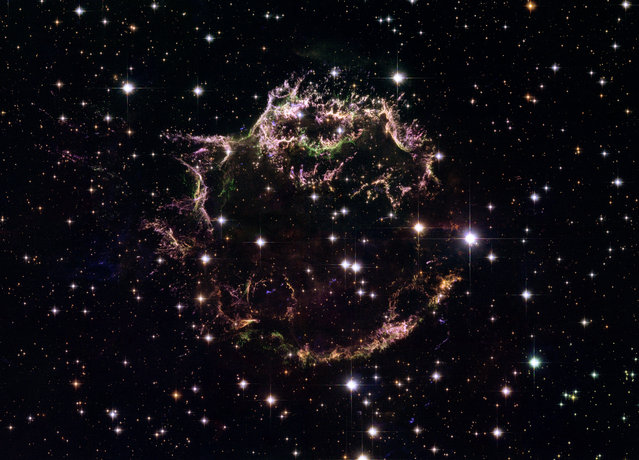
This image made by the NASA/ESA Hubble Space Telescope shows the tattered remains of a supernova explosion known as Cassiopeia A. It is the youngest known remnant from a supernova explosion in the Milky Way. (Photo by NASA, ESA, Hubble Heritage STScI/AURA-ESA/Hubble Collaboration via AP Photo)
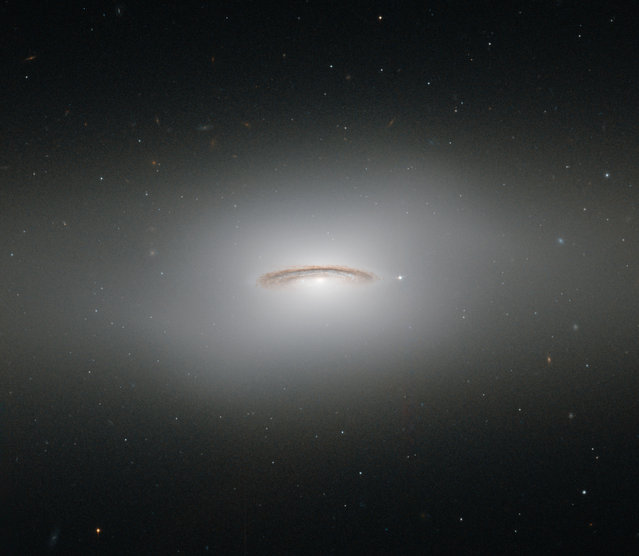
This image made by the NASA/ESA Hubble Space Telescope shows NGC 4526. One of the brightest lenticular galaxies known, it has hosted two known supernova explosions, one in 1969 and another in 1994, and is known to have a supermassive black hole at its center with a mass of 450 million Suns. NGC 4526 is part of the Virgo cluster of galaxies. A version of this image was entered into the “Hubble's Hidden Treasures” image processing competition by contestant Judy Schmidt during an initiative to invite astronomy enthusiasts to search the Hubble archive for notable images that have never been seen by the general public. (Photo by ESA/Hubble & NASA via AP Photo)
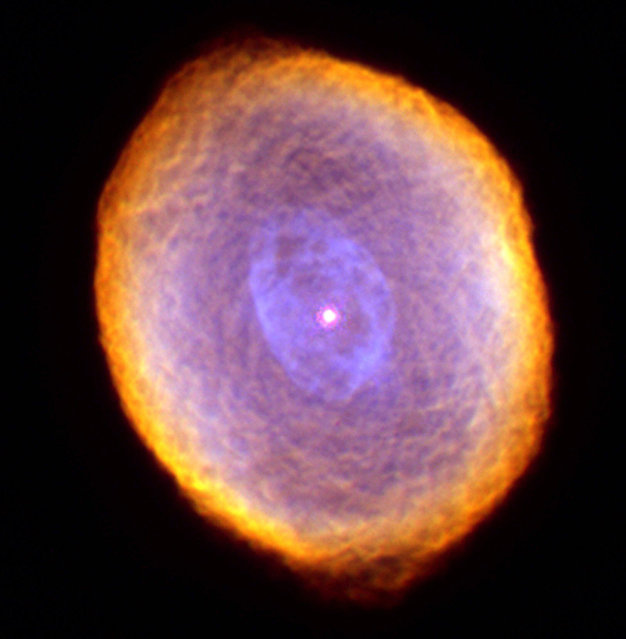
Planetary nebula IC 418, known as the Spirograph Nebula, located 2,000 light years from Earth, is seen in this photo from the Wide Field Planetary Camera 2 aboard NASA's Hubble Space Telescope. A planetary nebula is the final stage of the evolution of a star similar to the sun. The Hubble image is shown in a false-color representation, based on exposures taken in February and September 1999 through filters that isolate light from various chemical elements. Red represents ionized nitrogen, green p hydrogen and blue – ionized oxygen. (Photo by AP Photo/NASA, The Hubble Heritage Team, Dr. Raghvendra Sahai and Dr. Arsen R. Hajian)
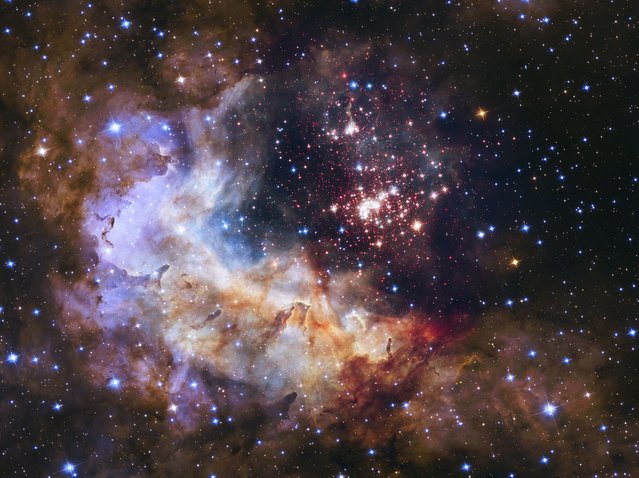
A stellar nursery of about 3,000 stars called Westerlund 2 located about 20,000 light-years from the planet earth in the constellation Carina is shown in this undated NASA handout taken by the Hubble Space Telescope released April 23, 2015. NASA will marked the silver anniversary of the launch of the Hubble Space Telescope Thursday. (Photo by Reuters/NASA)
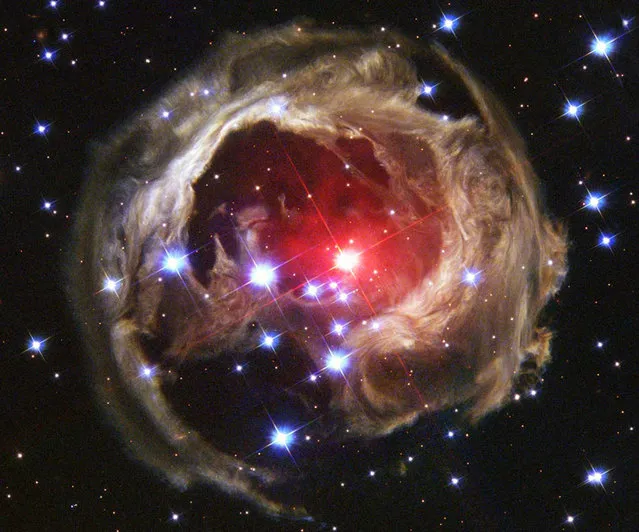
Star V838 Monocerotis's – V838 Mon – light echo, which is about six light years in diameter. (Photo by Reuters/NASA/ESA/H. E. Bond)
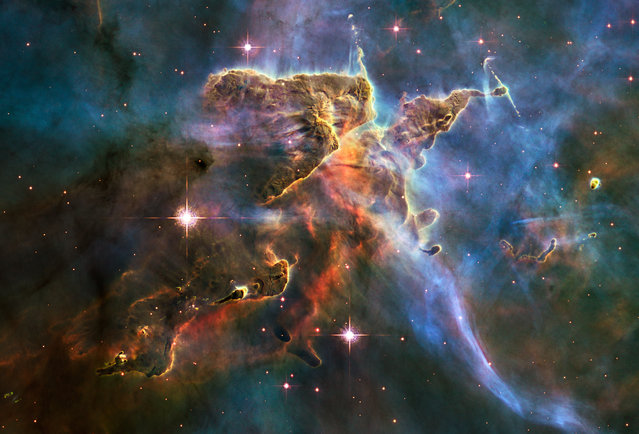
The tempestuous stellar nursery called the Carina Nebula, located 7,500 light-years away from Earth in the southern constellation Carina. (Photo by Reuters/NASA)
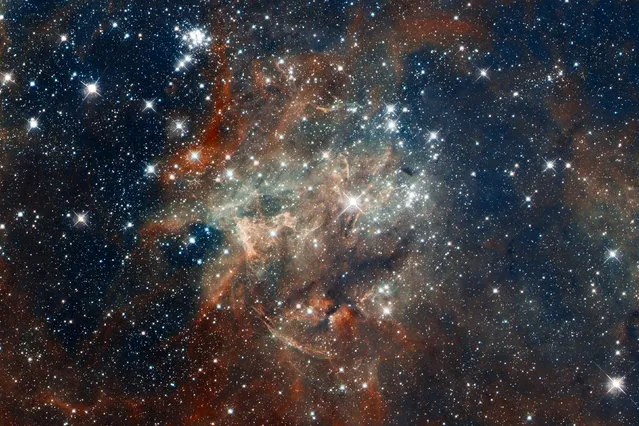
Star cluster NGC 2060, a loose collection of stars in 30 Doradus, located in the heart of the Tarantula Nebula 170,000 light-years away in the Large Magellanic Cloud, a small, satellite galaxy of our Milky Way. (Photo by Reuters/NASA/European Southern Observatory/Space Telescope Science Institute/Hubble Space Telescope)
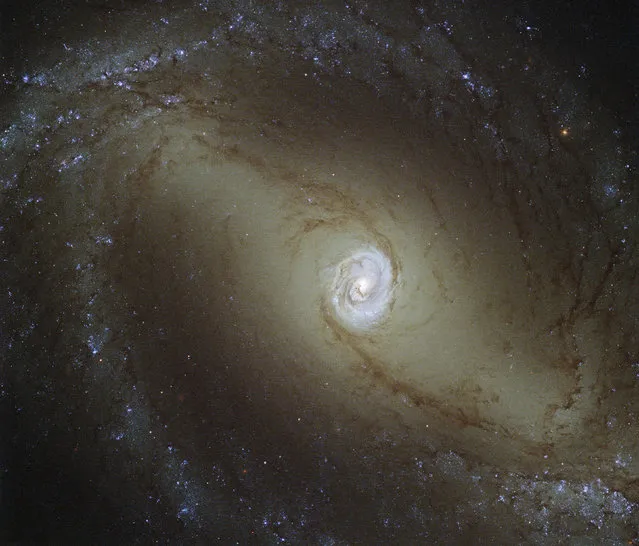
A spiral galaxy known as NGC 1433, about 32 million light-years from Earth. (Photo by Reuters/NASA/ESA/Hubble)
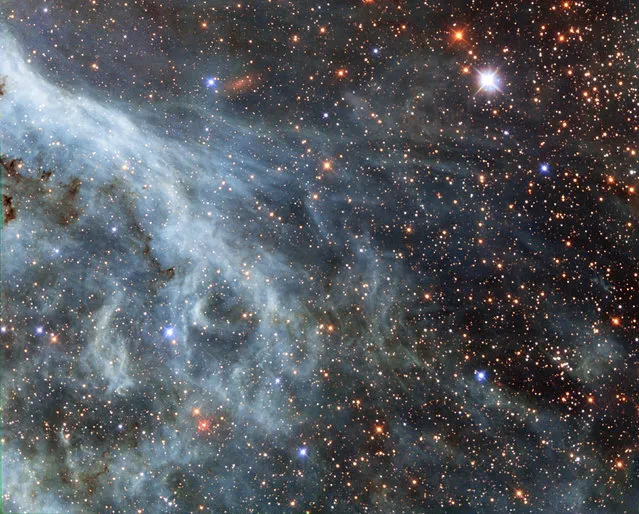
A section of the Tarantula Nebula, located within the Large Magellanic Cloud. The LMC is a small nearby galaxy that orbits our galaxy, the Milky Way, and appears as a blurred blob in our skies. (Photo by Reuters/NASA/ESA/Hubble)
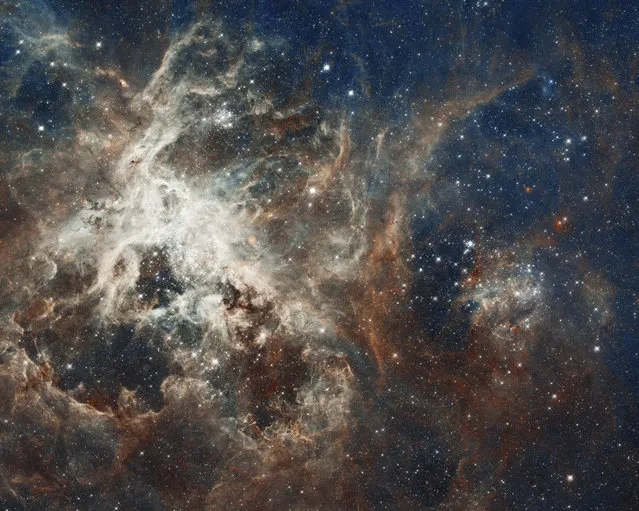
One of the largest mosaics ever assembled from Hubble photos shows several million young stars vying for attention amid a raucous stellar breeding ground in 30 Doradus, a star-forming complex located in the heart of the Tarantula nebula. (Photo by Reuters/NASA/ESA)
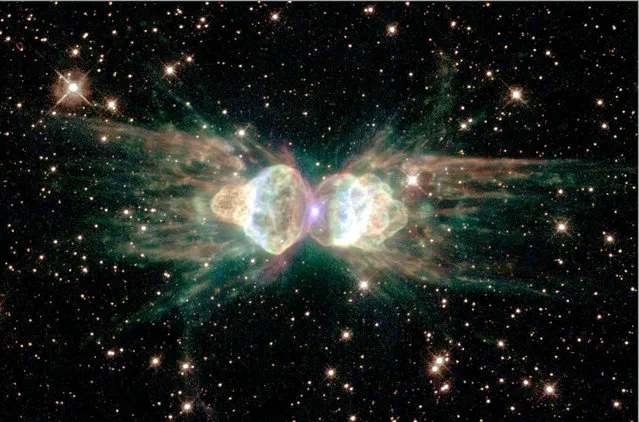
The glowing remains of a dying, sun-like star – of the so-called “Ant nebula” – Menzel 3, or Mz3. (Photo by Reuters/NASA)
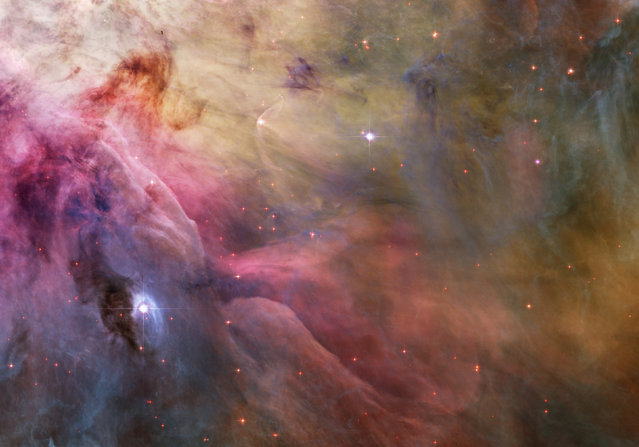
An aesthetic close-up of cosmic clouds and stellar winds featuring LL Orionis, interacting with the Orion Nebula flow. Adrift in Orion's stellar nursery and still in its formative years, variable star LL Orionis produces a wind more energetic than the wind from our own middle-aged Sun. (Photo by Reuters/NASA/ESA/Hubble)
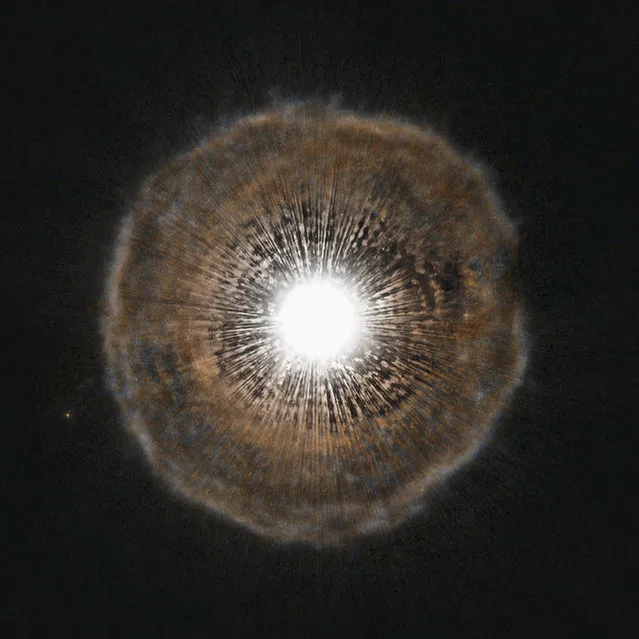
U Camelopardalis, or U Cam for short, a star nearing the end of its life located in the constellation of Camelopardalis, near the North Celestial Pole. (Photo by Reuters/NASA/ESA/Hubble/H. Olofsson)
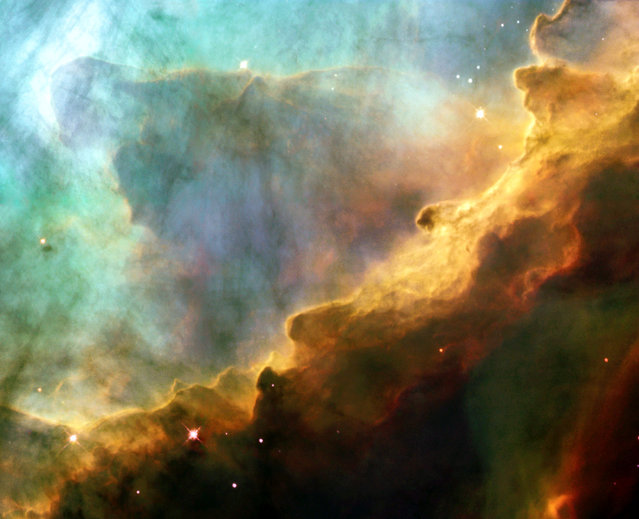
An image of a small region within a hotbed of star formation M17, also known as the Omega or Swan Nebula, located about 5,500 light-years from Earth in the constellation Sagittarius. (Photo by Reuters/NASA/ESA/J. Hester)
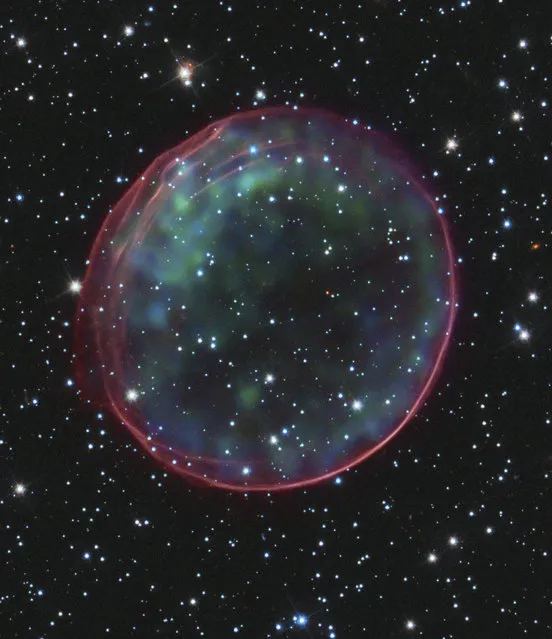
Supernova remnant 0509-67.5, located in the Large Magellanic Cloud, a small galaxy about 170,000 light-years from Earth. (Photo by Reuters/NASA/ESA, CXC, SAO, Hubble Heritage Team)
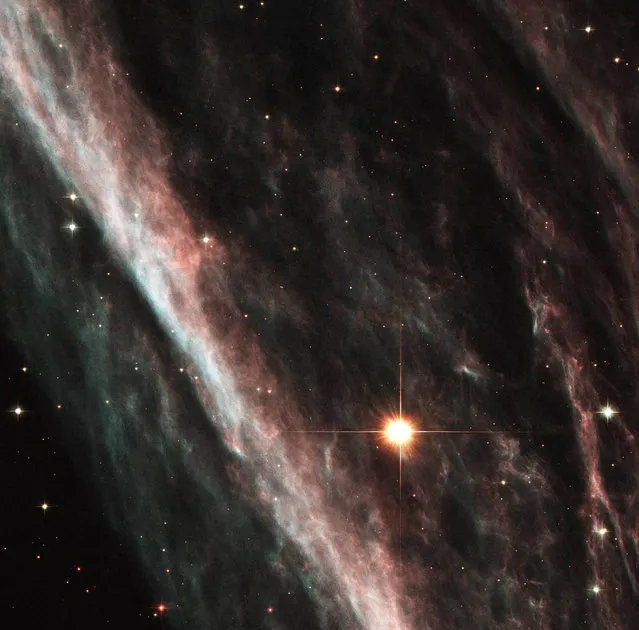
An image of the Pencil Nebula shows remnants from a star that exploded thousands of years ago. (Photo by Reuters/NASA)
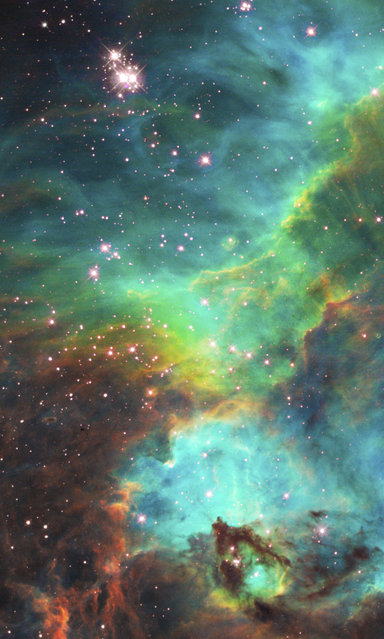
An image of a nebula about 170,000 light-years away. (Photo by Reuters/NASA/ESA/Hubble)
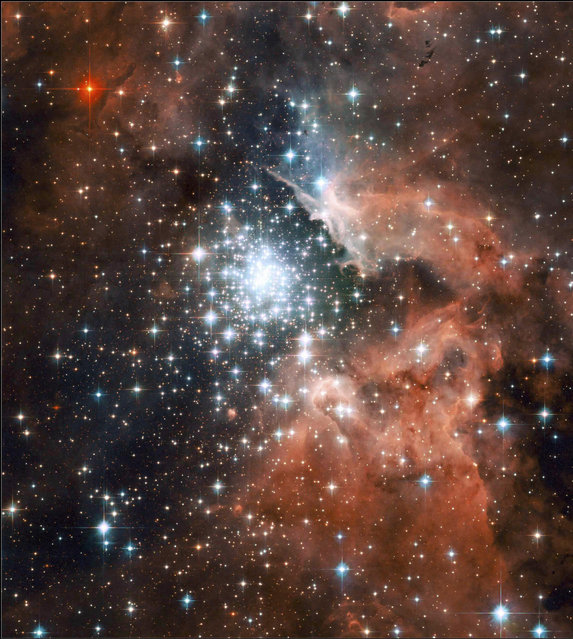
An image shows a giant star-forming nebula with massive young stellar clusters. (Photo by Reuters/NASA/ESA/Hubble)
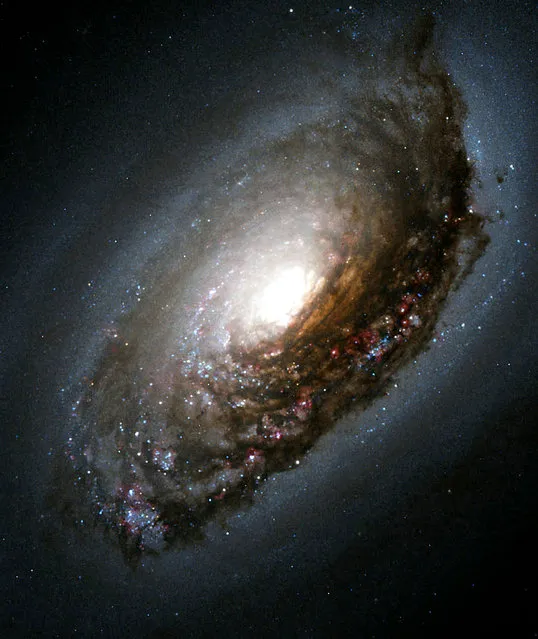
The “Black Eye” galaxy, so named because an ancient cosmic smashup produced a dark ring and a roiling, conflicted interior. What looks like a black eye in the image is actually a dark band of dust that stands out vividly in front of the galaxy's bright nucleus. (Photo by Reuters/NASA/Hubble)
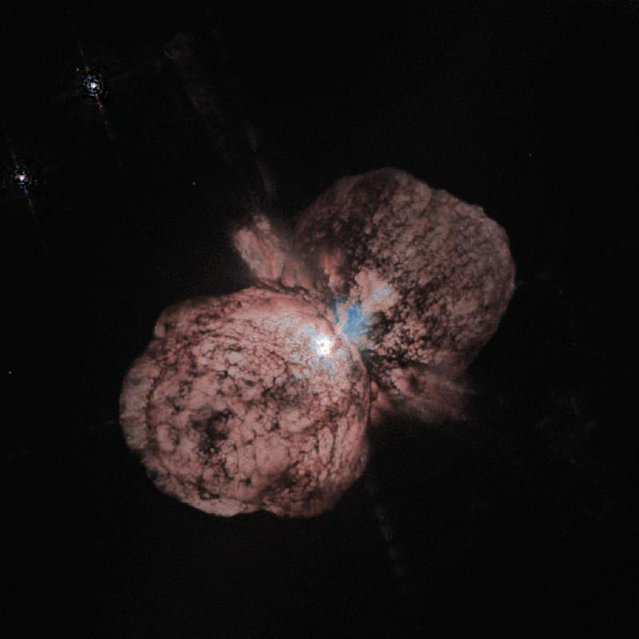
A massive star known as Eta Carinae in our Milky Way galaxy that experts believe might explode in a supernova in the astronomically near future. (Photo by Reuters/NASA)
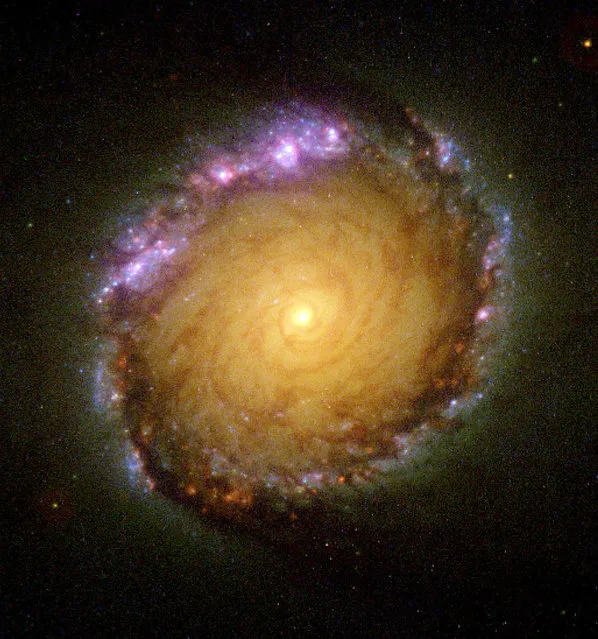
An image of galaxy NGC 1512 showing a monster area - 2,400 light-years across – filled with clusters of infant stars. (Photo by Reuters/NASA)
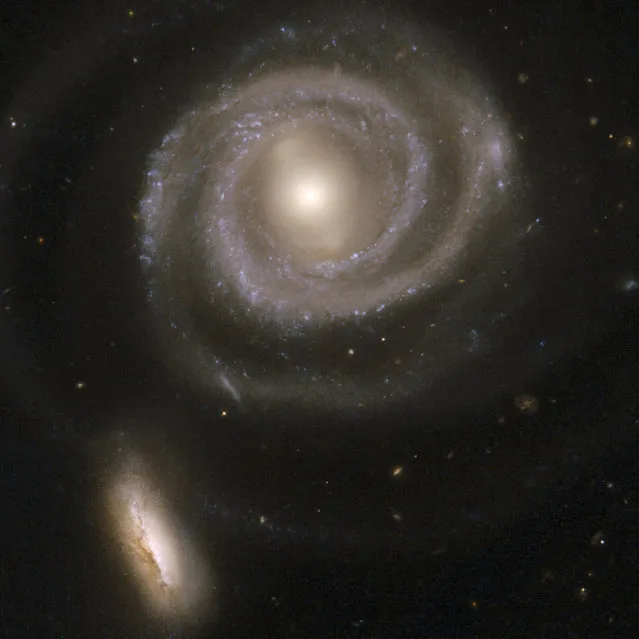
A pair of interacting galaxies consisting of NGC 5754, the large spiral on the right, and NGC 5752, the smaller companion in the bottom left. NGC 5754's internal structure has hardly been disturbed by the interaction. The outer structure does exhibit tidal features, as does the symmetry of the inner spiral pattern and the kinked arms just beyond its inner ring. In contrast, NGC 5752 has undergone a starburst episode, with a rich population of massive and luminous star clusters clumping around the core and intertwined with intricate dust lanes. The contrasting reactions of the two galaxies to their interaction are due to their differing masses and sizes. (Photo by Reuters/NASA/ESA/Hubble/W. Keel/University of Alabama)
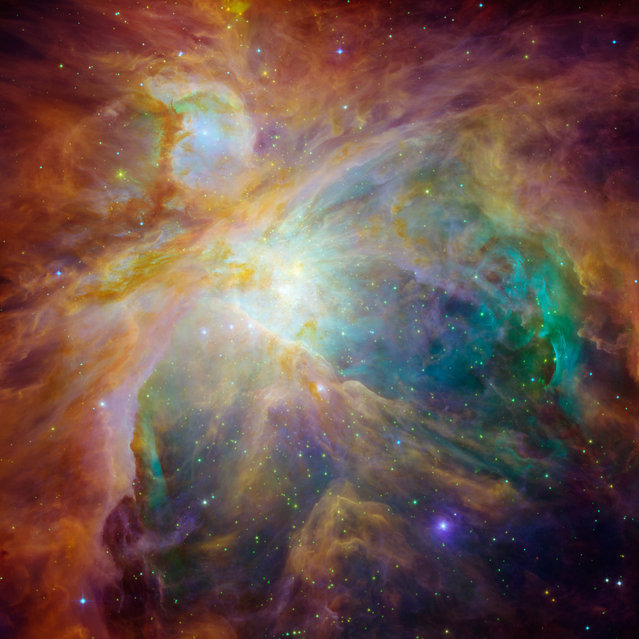
An image of the Orion nebula shows four monstrously massive stars at the center of the cloud. (Photo by Reuters/NASA/JPL-Caltech/T. Megeath/University of Toledo/M. Robberto/STScI)
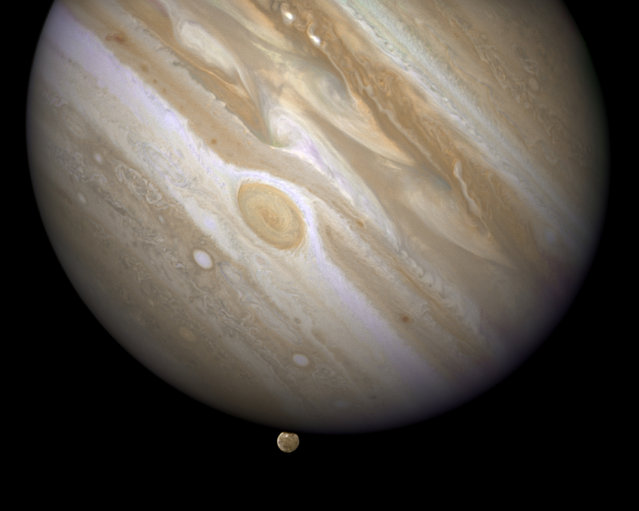
The planet Jupiter is shown with one of its moons, Ganymede (bottom), in this NASA handout taken April 9, 2007. Scientists using the Hubble Space Telescope have confirmed that the Jupiter-orbiting moon Ganymede has an ocean beneath its icy surface, raising the prospects for life, NASA said. (Photo by Reuters/NASA/ESA/E. Karkoschka)
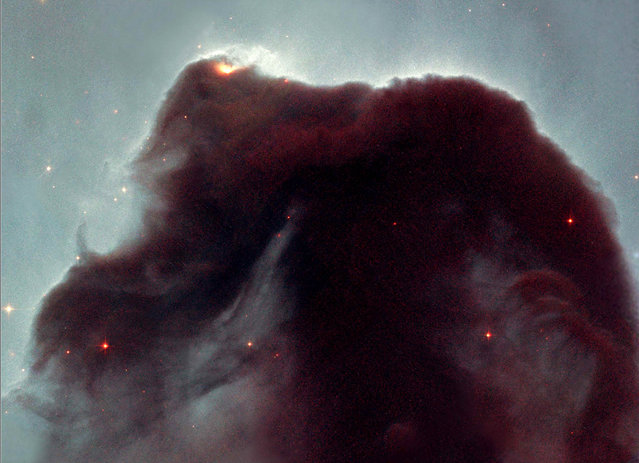
The Hubble telescope took a close-up look at this heavenly icon, revealing the cloud's intricate structure. This detailed view of the horse's head was released April 24, 2001 to celebrate the orbiting observatory's eleventh anniversary. (Photo by Reuters/NASA)
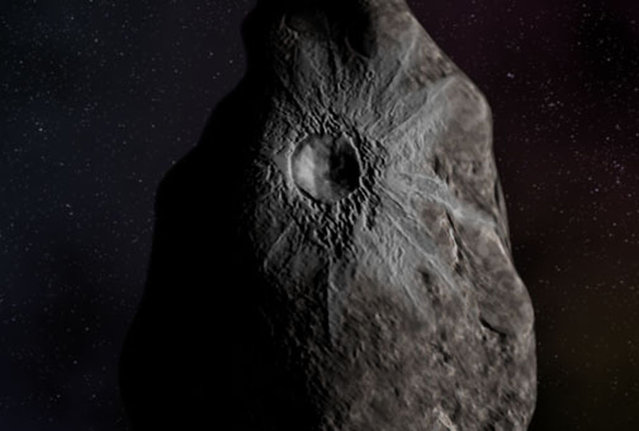
Image taken from Hubble space telescope shows a crater on an object called 8405 Asbolus, a 48 mile-wide chuck of ice and dust that lies between Saturn and Uranus. Astronomers using the telescope found what looks like a fresh water crater less than 10 million years old, exposing underlying ice that is apparently unlike any yet seen. (Photo by Reuters/NASA)
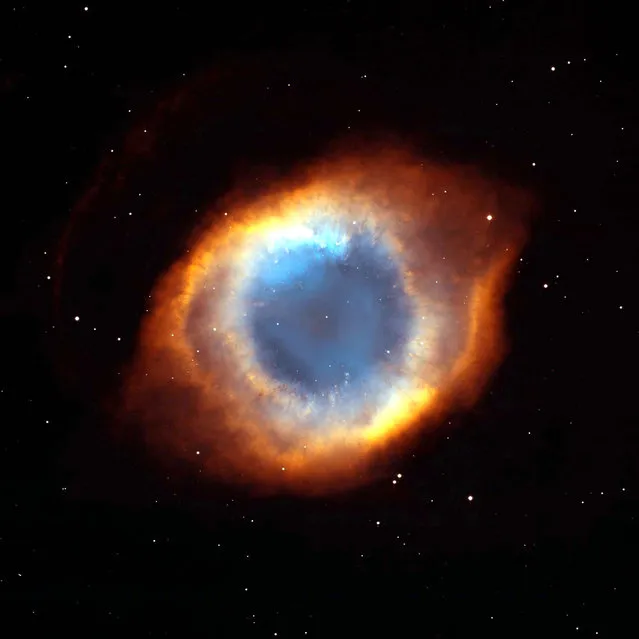
A coil-shaped Helix Nebula showing a fine web of filamentary “bicycle-spoke” features embedded in the colorful red and blue ring of gas. At 650 light-years away, the Helix is one of the nearest planetary nebulae to Earth. A planetary nebula is the glowing gas around a dying, Sun-like star. (Photo by Reuters/NASA)
24 Apr 2015 11:25:00,
post received
0 comments
